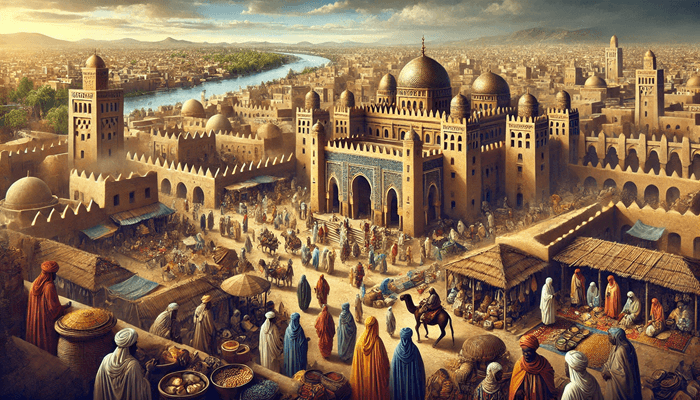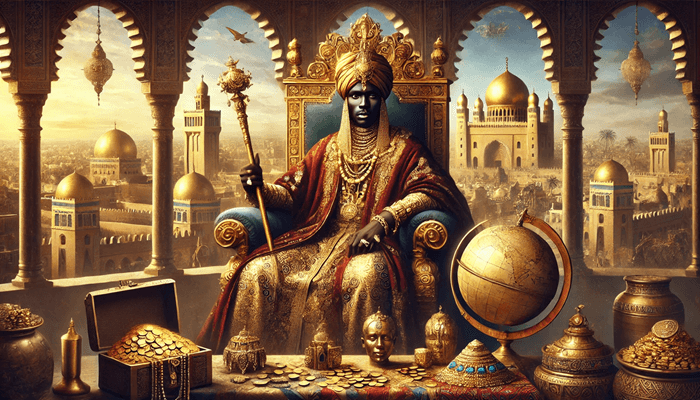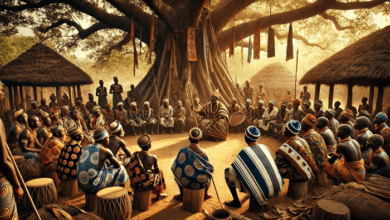The Empire of Mali: one of the biggest and powerful African states in the Middle Ages

Out of all three West African superpowers-Ghana, Mali, and the Songhai-Mali was the most concerned. Its land spans from the Atlantic Ocean to the Niger River. In subsequently 13th-century, pre-modern history, one of the largest countries in all of Africa, it is far less surprising. And this legacy continues to influence humanity and beyond.
A multi-faith country
The Malian Empire occupied the western Sahel, a region in northwestern Africa south of the Sahara Desert. Historically, the region’s had religious exchanges. For Mali, these exchanges pertain to local ethnic cultures and Islam.
Islam spread to the Sahel by North African Arabs as early as the eighth century. Some rulers and aristocratic families in some places turned to Christianity, but such was not true of most of the rural population.
Some ethnic groups are more responsive to the missions carried out by Northerners than others. It will take a thousand years to totally transform West Africa into an Islamic fortress. Islam seems to have to make do with the original local belief system, the Sahelism. For instance, Muslim religious authorities can etch verses from the Qur’an onto amulets and amulets and spread a layer of Islamic paint over existent designs.
The Keita dynasty, the ruling house of the Malian Empire, claimed legitimacy based on a long history of a Muslim founder’s arrival in West Africa. Nevertheless, in the history of Mali, Islam and local traditions have known serious differences but they have also been sufficiently in contact to learn from each other and in this sense to develop together.
The Gold trade
In terms of economy, the Mali Empire was characterized by a commodity of special importance, gold. Mali’s emperor rules over many vast gold mines in the Western Sahel. Therefore, gold takes up most of the trans-Saharan trade network on the part of the Malians. Arab and European nations even started minting gold coins at the time, some surely originating in Mali. In fact, trade was a primary method of increasing the spread of Islam in West Africa. It was the merchants of the north and east who brought religion here, converting the locals to Islam. This contrasts with the north of the Sahara, where conquering Muslim armies were propagating their faith in the lands they conquered.
But there is a dark side to the Malian economy. Slavery has long been part of the Sahel and is integral to the practice of the empire. Slave trade is another offshoot of the trans-Saharan network that supplies captives to North African slave traders. In parts of the region, this has turned slavery into a hereditary identity. Despite the abolition of slavery, discrimination against the descendants of the slave class continues in contemporary Mali.
Islam
When Islam was well established in the Malian Empire, Muslim scholars utilizing this communication network built schools and higher education centers. Timbuktu and other cities have become the leading centers of Islamic scholarship. There are thousands of manuscripts stored in Madrasas and libraries, across various fields, be it religion or secularism.
In fact, the rulers of Mali even fund these institutions. Some of the most renowned Islamic centres in Timbuktu are Sankore, Sidi Yahya, and Djinguereber.
Support for Islamic scholarship persisted after the fall of Mali. The Songhai Empire under the Askia Dynasty was arguably the wealthiest patron of manuscript production.
But while its influence is periodically revived, Timbuktu slowly took second place. By the seventeenth century, its glory was all but gone. What’s left is just the memory of that city; a city that was so rich that it became disgusting.
Emperor Mansa Musa of Mali

.Mansa Musa, the emperor of Mali, is best known to contemporary Arab and European authors for his huge wealth. Saudi critic and Syrian historian Ibn Fadlallah Al-Umari spoke of Musa’s pilgrimage to Mecca, which took place in 1324-1326 U. He especially focused on the attitude of the people of Cairo to mansa. Musa handed out so much gold in the Egyptian capital that the cost of gold fell there for twelve years in a row . The authenticity of the story is one of the most controversial. Despite the attempt of some modern authors to name Musa the richest person, comparing it with John D. Rockefeller, there are no reliable data on the history of one over the other.
The Capital
The Malian Empire was a very rich empire under Musa, and yet somehow, surprisingly, the scholars are still unable to identify the capital of his empire. We see different places depending on the past data. The most important medieval Muslim traveller, Ibn Battuta, had visited Mali’s capital but not given a reliable location. According to Arab chroniclers, the capital of the Malian Empire could be situated anywhere across the western Sahel. Some cities – Timbuktu and Gao in Mali, Niani in present-day Guinea – were surely the biggest of its time. Historians and archaeologists, however, seem unable to agree on where the heart of the Malian Empire was.
One of the most enduring legacies of the Mali Empire is in its architecture. With little stone available in the region, medieval West African architects relied almost exclusively on mud bricks for construction. Particularly those mud brick constructions that made it until recent days have outer wooden frames. In this way, local masons can go upstairs and add additional mud bricks to help reinforce the structure, and this process must be done periodically.
All these well-known Sahelian buildings of the Malian Empire period were Islamic centers. The best known of these is the Great Mosque of south-central Mali. The current rebuild of the building started in 1907, but the ancestors of its predecessor offered hundreds of years of records. This style was also used to build the three Islamic schools of Timbuktu-Sankore, Sidi Yahya, and Djinguereber. Islamic Sahel architecture ranges from Senegal and Mali in the north to modern Ghana and Nigeria in the south. They may be made of less durable media than steel or stone, but their core symbolic weight clearly persists as a means of survival.
Before the advent of Islam, history in the Sahel was not recorded in writing. Instead, the story was passed down orally from generation to generation. This oral tradition continues to thrive in West Africa. At its heart is a thing called “metrical,” a group of people. It is their responsibility to preserve the cultural identity of their own country. Bards play no role in Western African society. They have trained in a number of fields since early childhood: music, oral poetry, performing arts and social history. String Instruments Kora (a harp-like instrument): Instrument played commonly by the bards Balafon (a large xylophone-like instrument):
Metrical poets have been intermarried with the same clan since time immemorial; social taboos prevented them from intermarrying with social classes that were not of their own. This has remained to some extent to the present day. From the Medieval period and actually there was such a poet in everyone’s palace who in the metrical form studied the royal genealogy and made it in front of the leader through the advice made. Yet most contemporary metrical poets are also musicians and performers.
For Western audiences, the most quintessential work of metrical poets is “Sunjata.” This epic recounts the legendary history behind the founding of the Malian Empire in the 13th century.
It is the history of the struggle between good and evil, of friendship, of conquest, of social responsibility, of overcoming adversity, to say some things.
The “Sunjata” version was first published in 1960 and is the most incidental version, but there are innumerable versions.
The outline of the story as told in “Sunjat” originates from an oral tradition, which has varied over time according to the performer and the audience. Over 700 years however, different story tellers have told aspects of the basic storyline of the story of ‘Sundiata Keita’





Highly interested story